IN CONVERSATION WITH:
PEISHAN HUANG
PEISHAN HUANG
(21.04.24)


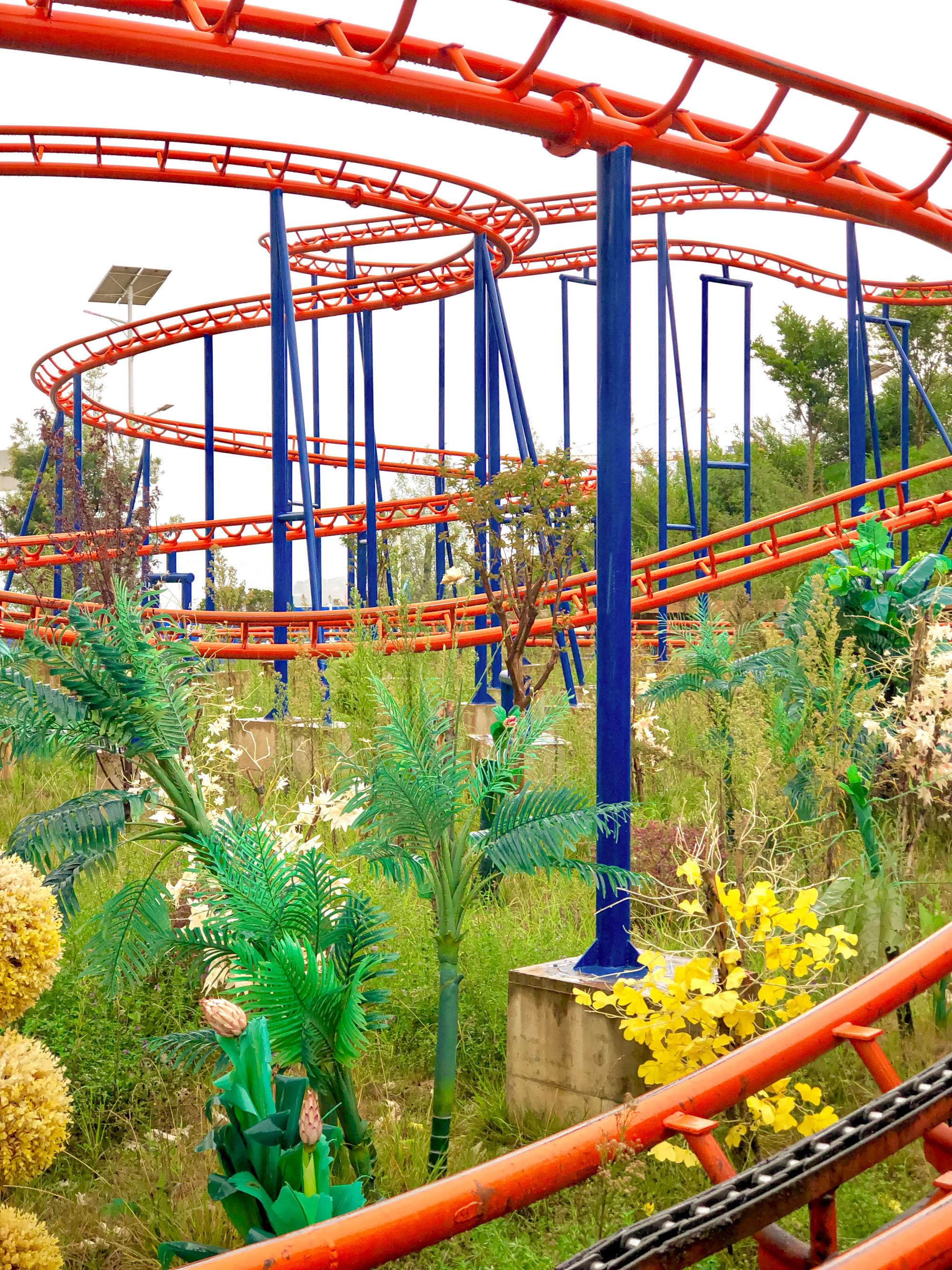




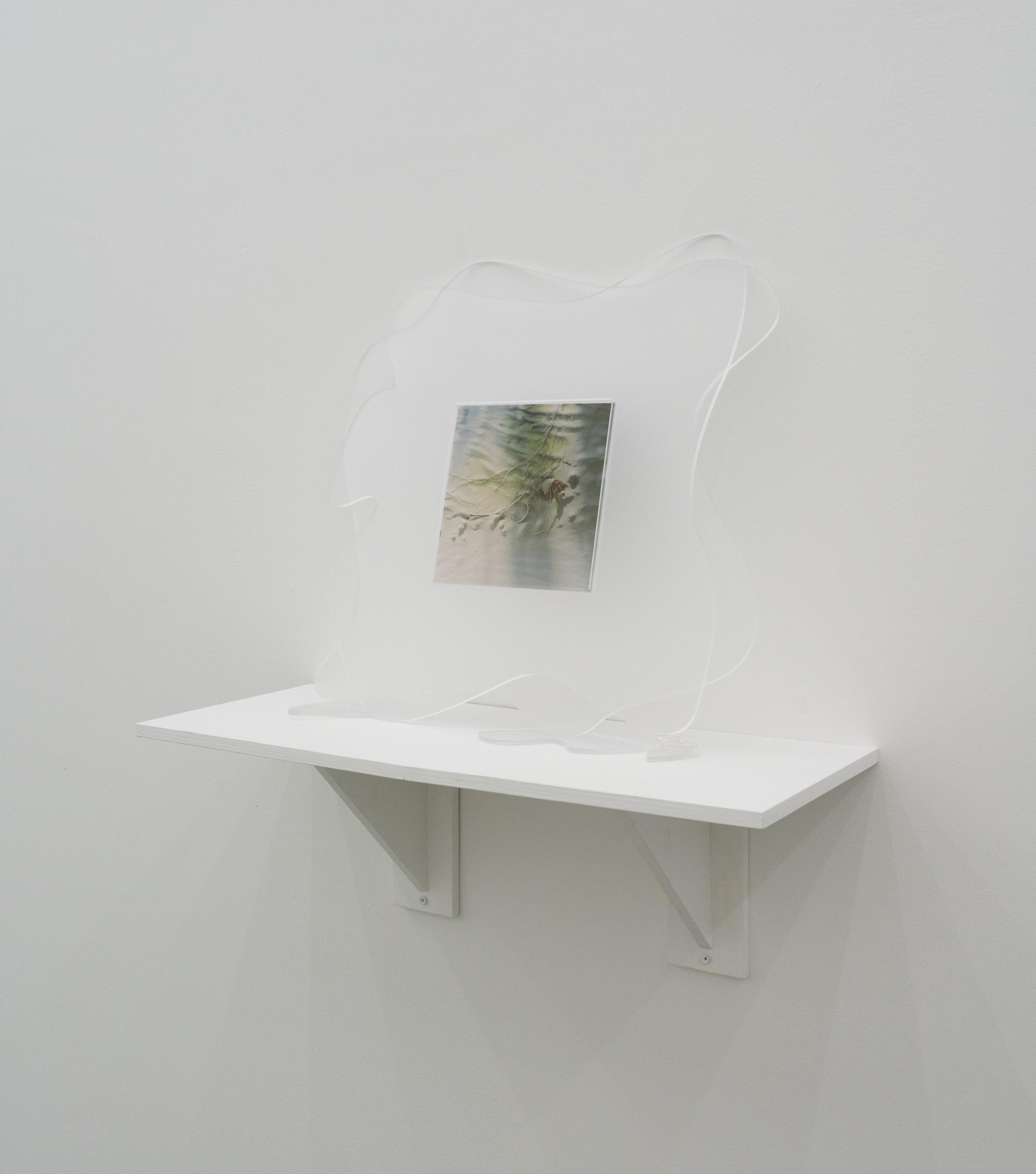
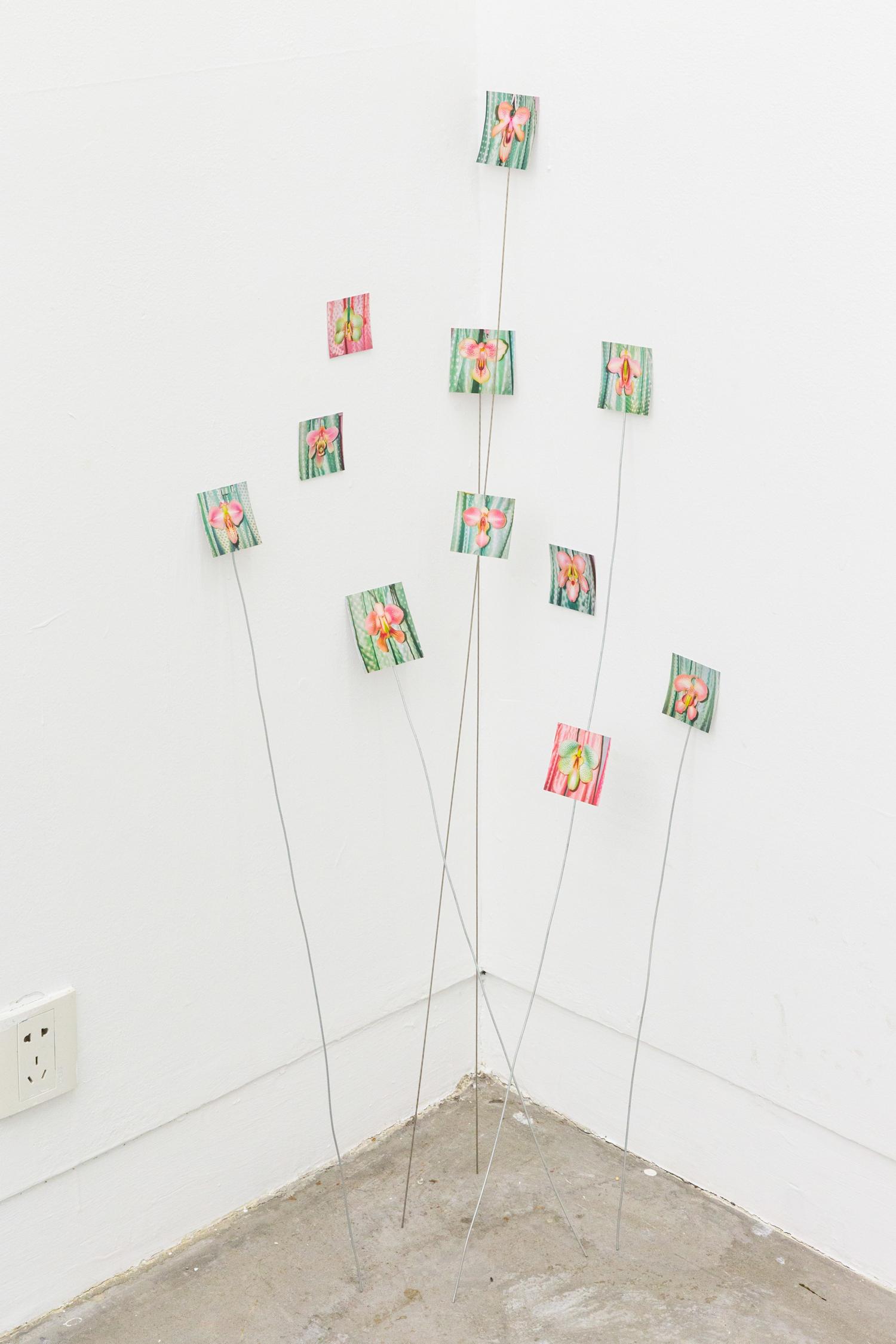
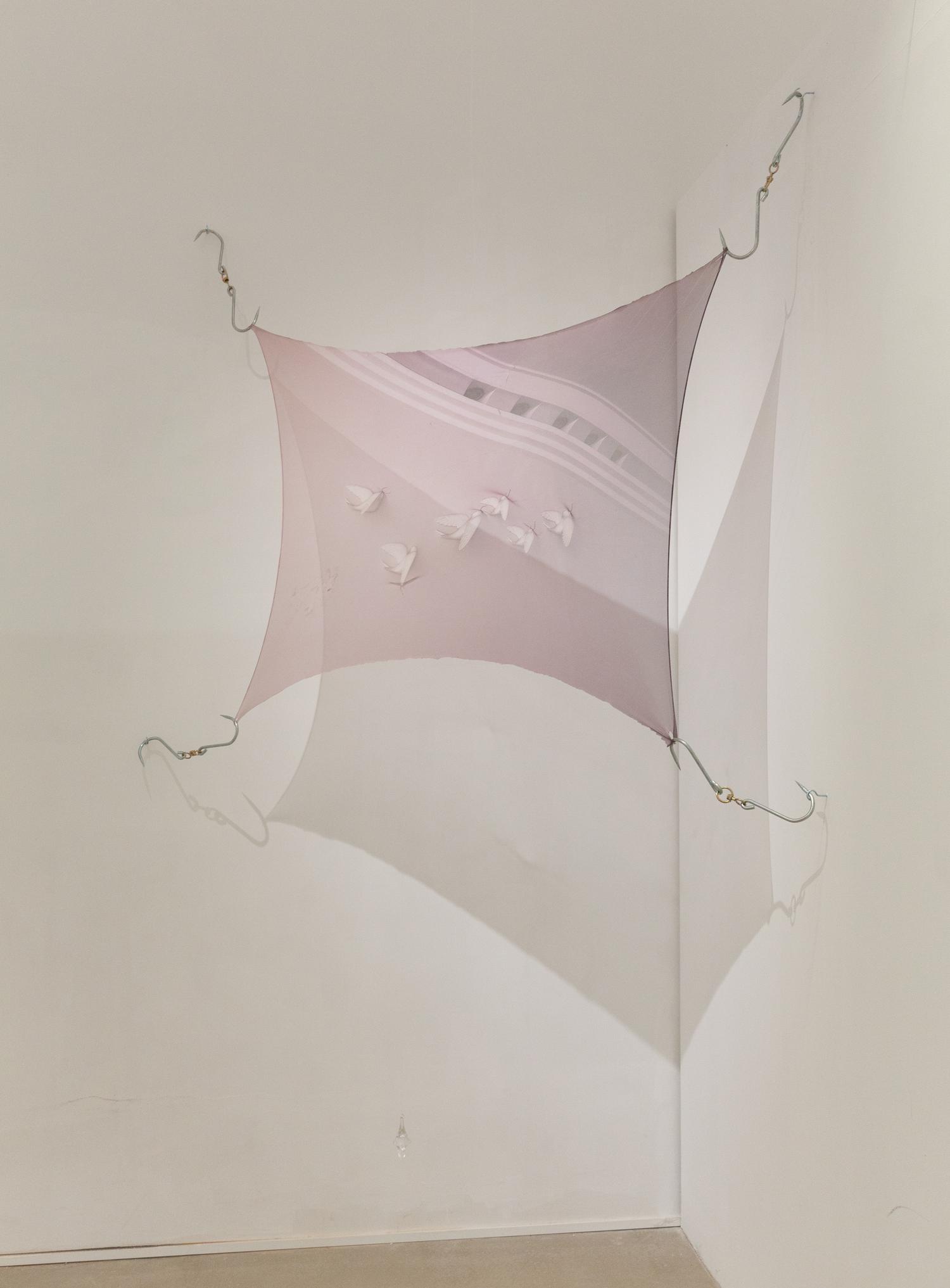
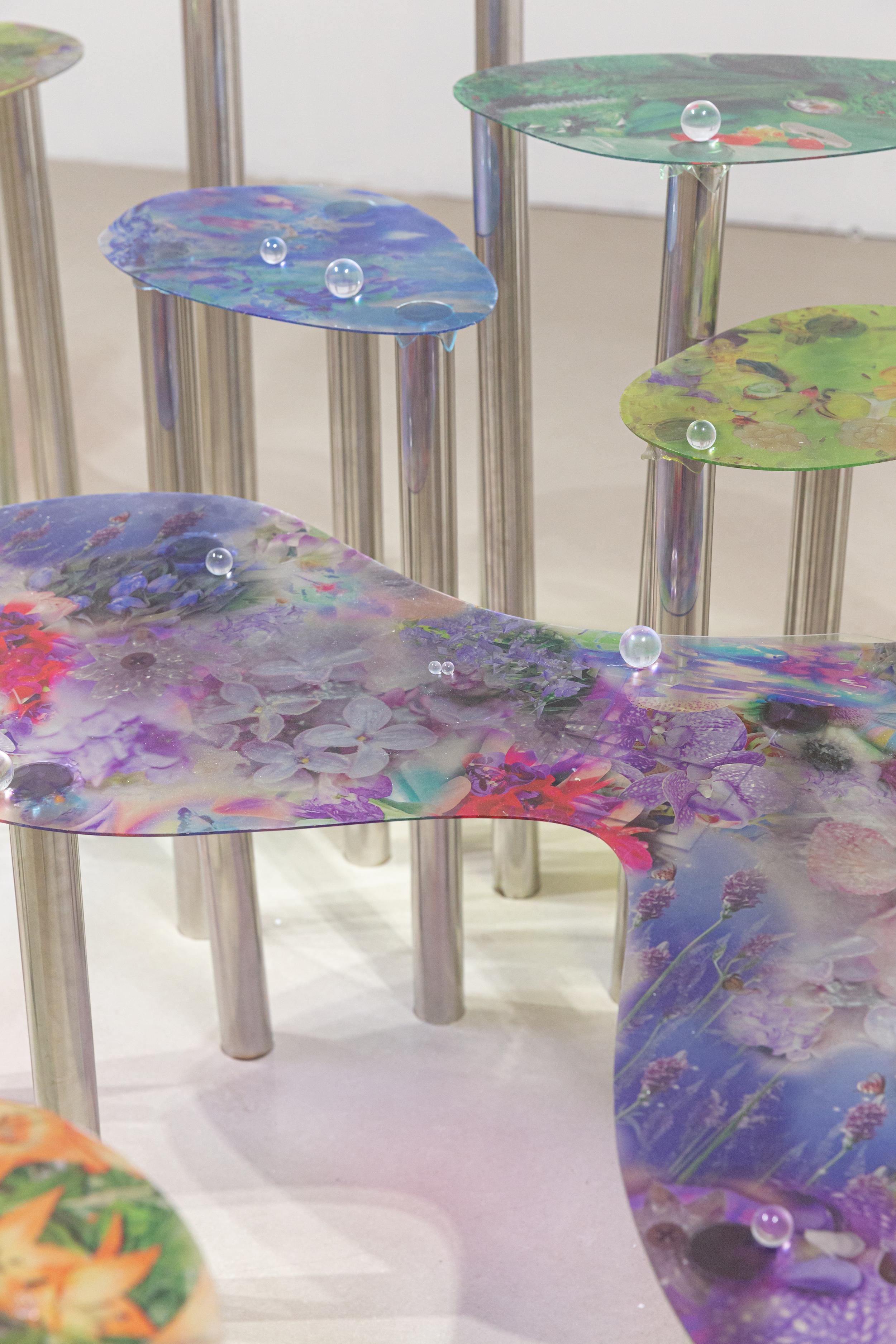

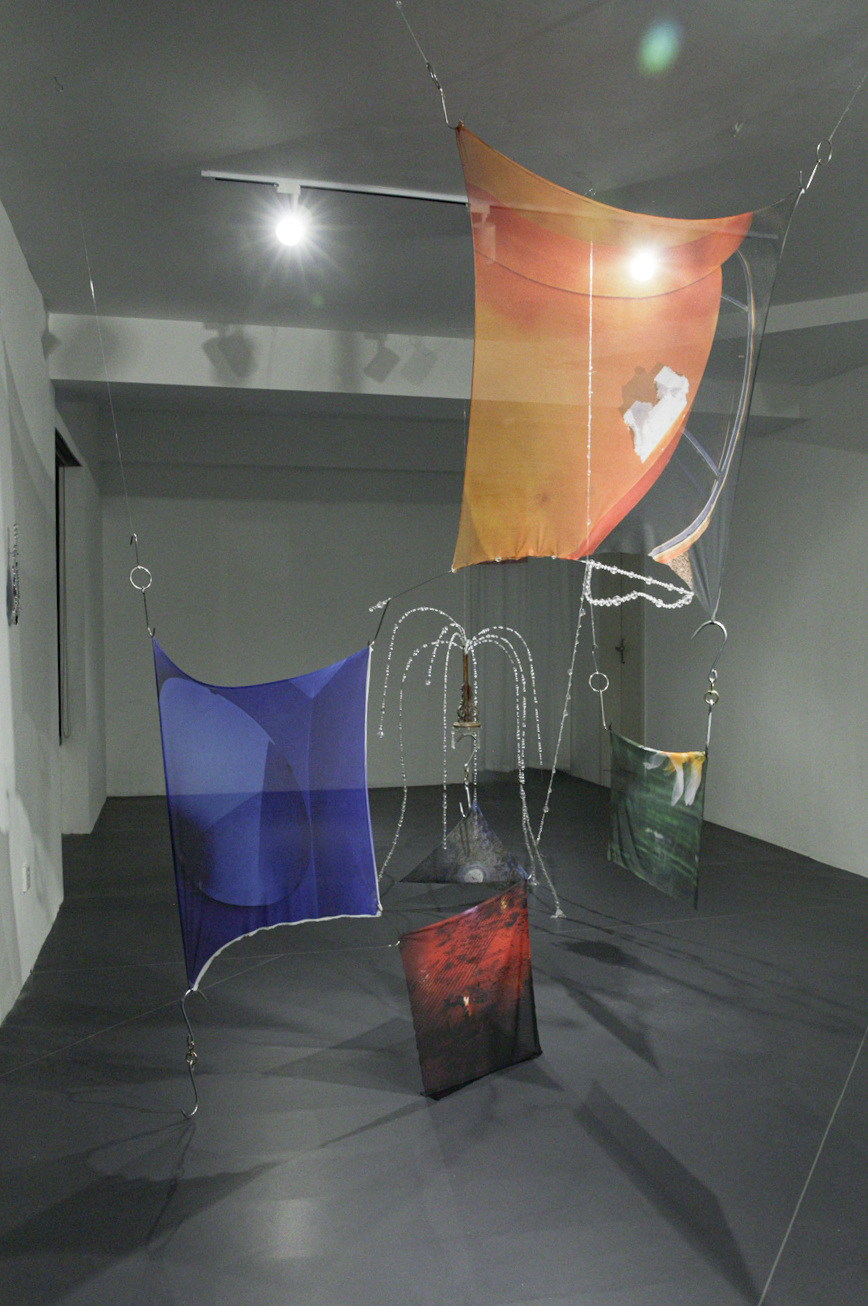
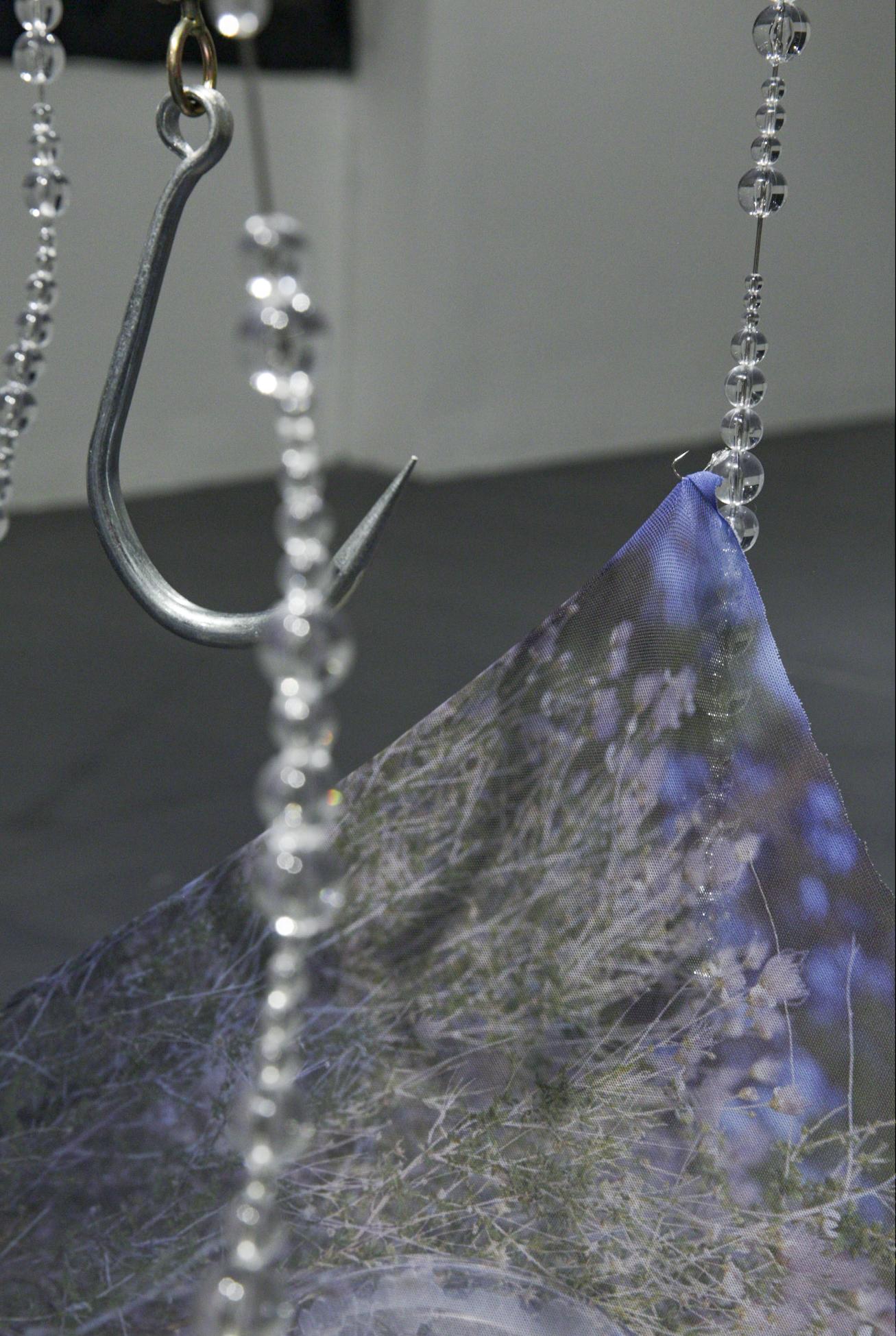




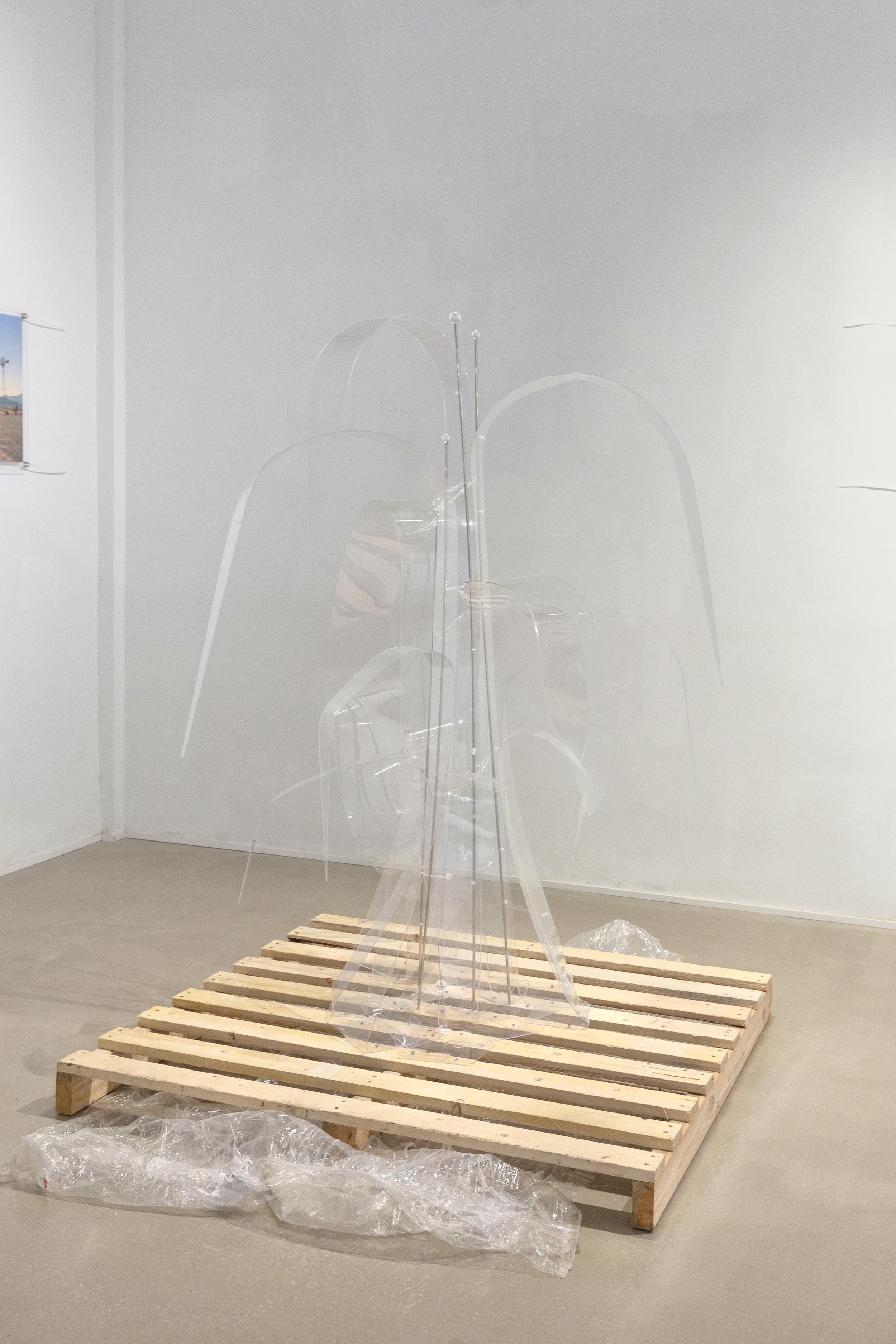

Adrian Jing Song: Thank you so much
for your time, Peishan. I understand you’re based in between China and the US.
Could you tell us about your experience navigating the art world between these two places and how this has shaped your practice so far?
AS: You recently completed your MFA. I’d love to know about your art school experience, as well as your decision making process behind leaving China and moving abroad to pursue fine art.
AS: That’s a really good observation which concerns a lot of art schools. Could you talk more about your experience after graduating, and what advice you would offer artists who are looking to build on their practice outside of the institution?
AS: That really is great advice! There is a sense of the poetic in your works, even when you move away from lens-based mediums and written language, your sculptural projects still convey quite a unique visual balladry. I’m interested in your process, and how you resolve your ideas.
AS: Your intuitive approach is inspiring, as well as the way you view your materials as ‘words’. This focus on language is also apparent in your project “New Bai Word 新白文”, I love how you’ve reconstructed the forgotten, or the invisible. Could you tell us more about this project, as well as your experience being part of a minority group whose written language, and knowledge, has been ignored by mainstream society?
AS: Yes, that’s so great, and it’s only through this effort you make to remember and retrace these words that this language becomes impossible to wash away. There also seems to be a common thread that runs through a lot of your projects, in that, there seems to be this fascination with artificial reconstructions of the natural world. Whether it’s material aesthetics or perhaps nostalgia, what do you hope to express by exploring this subject matter?
AS: Humans also have an obsession with immortality, and I think it’s really interesting, this balance between wanting to simulate nature, but at the same time trying to defy the effects of time. Your work In Loving Memory of Eternity comes across as a promise to always remember.
AS: I like the ambiguity as well! Your art practice, work and daily duties must take up a lot of your time, but what is inspiring you at the moment?
AS: Thank you again, Peishan. I’ve really enjoyed getting to know more about your practice, as well as about your journey so far. What are you working on, and what do you have planned for the future?
︎
Peishan Huang was born in 1994 in Dali, Yunnan, China. She is a multidisciplinary artist living and working in between Brooklyn, NY and Dali. She holds an MFA in Multidisciplinary Fine Art from the Maryland Institute College of Art (2022) and a BA in Advertising from the Communication University of China (2018). Her works have been exhibited internationally, including M+B Gallery in Los Angeles, CA, Chambers Fine Art in New York, Latitude Gallery in New York, Inna Art Space in New York, Three Shadows Photography Art Center in Beijing, China, Times Art Museum in Chengdu, China, Advertising Museum of China in Beijing, Museum 54 in Shanghai, MP Birla Millennium Art Gallery in London.
To see more work by Peishan Huang, visit - Website / Instagram
︎
Peishan Huang: I’ve lived in China for 26 years and in the US for 3 years. These two experiences, though very different in duration, have both significantly influenced my practice. For instance, my aesthetic preferences are shaped by a mix of influences from my homeland and contemporary art content to which I was exposed to only in grad school. The fact that I have frequently changed my locations during the past year is due to objective reasons. From a creative perspective, I still want to work in one place for an extended period and maintain a fixed studio. However, given the advanced state of today's transportation industry, which connects the world, I often purchase the materials from China and ship them to the US, and then send the finished work to other countries for exhibitions.
AS: You recently completed your MFA. I’d love to know about your art school experience, as well as your decision making process behind leaving China and moving abroad to pursue fine art.
PH: In the summer of 2022, I graduated from Maryland Institute College of Art (MICA) with an MFA in Fine Art. Back in 2018, I was just an undergrad majoring in Advertising. Despite my initial passion for advertising, I harboured a deeper, more profound love for art. I wanted to explore more and experience different things while I was young. It inspired a bold career shift. However, since I lacked the foundation of art, and couldn’t even sketch or draw, I didn’t know where to start on the path to becoming an artist. Viewing the application to school as a pivotal moment, and with my family’s encouragement and support, I gathered the courage to apply to grad school with my photography work. Fortunately, I received many offers and ultimately chose MICA.
I dearly miss my experience at MICA, it was truly life changing. Having my own individual and spacious studio on campus and being a student without any work pressure allowed me to immerse myself in the freedom to create almost daily. Although sometimes I felt miserable due to the challenges I encountered, my professors provided immense love and support. This helped me grow into someone a lot more confident than when I first entered school. The only downside is that I think my school resembles a paradise focused on artistic practice, yet it neglects the development of one's career as an artist after graduation. Although there were lectures in place, they were insufficient. I’ve talked about it with graduates from New York art schools and found that they seem much more professional and have a stronger sense of career development.
AS: That’s a really good observation which concerns a lot of art schools. Could you talk more about your experience after graduating, and what advice you would offer artists who are looking to build on their practice outside of the institution?
PH: After graduation, I moved from Baltimore to New York City to seek more opportunities and developments, but the year in New York was not easy. As an international student, I encountered a serious VISA problem and finally struggled to continue living in the US. I thought moving to New York would make everything better, but it didn’t, and I was overwhelmed like a piece of blank paper that didn’t know anything. I tried to submit some applications to artist residencies and galleries with no response, and the high rent of my room and studio was crushing me. It took almost a year for the situation to get slightly better. If I have any advice for students who are still in school, I think it’s essential to prepare yourself early for post-graduation, pave the way ahead of time, and build effective links.
AS: That really is great advice! There is a sense of the poetic in your works, even when you move away from lens-based mediums and written language, your sculptural projects still convey quite a unique visual balladry. I’m interested in your process, and how you resolve your ideas.
PH: I'm glad that your feelings overlap with what I want to convey. I’m trying to weave poetry in a medium other than words. The images and materials are my “words” in my practice. My practice is a dynamic process, the kind of working method of having a clear concept and plan first and then implementing it doesn't work for me. I love to take things one step at a time. Only by taking the first step will I know how I should take the second step. For me, creating is visualizing and materializing abstract things, although I have an image of what I expect my work to look like, I need to face a physical object to figure out whether or not it has the status of “completion”. I don’t think there are absolute standards of success for a piece of work, we can say a work is successful when it is popular, if I simply like a work, I’d also say, it’s successful.
AS: Your intuitive approach is inspiring, as well as the way you view your materials as ‘words’. This focus on language is also apparent in your project “New Bai Word 新白文”, I love how you’ve reconstructed the forgotten, or the invisible. Could you tell us more about this project, as well as your experience being part of a minority group whose written language, and knowledge, has been ignored by mainstream society?
PH: I was born and grew up in Dali Bai Autonomous Prefecture, but from my generation onwards, my family didn’t speak the Bai language. As a child, I didn’t see anything wrong with this, but when I was 18, I realized it was a great pity that I didn’t master our language. So I started to learn from my grandparents, and I found out how difficult it is to learn a new language without written words. I tried to write down the new words I learned by using some phonetic notation, and that was the beginning of my New Bai Word project.
This project is a kind of experiment to textualize a language. I came up with the idea of morphophonetic characters, so I took the current phonetic method used in the study of Bai language as a reference to split each word into consonant, rhyme, and tone, and then designed a new system of morphophonetic characters by referring to the shape of the undeciphered characters on the tiles of Nanzhao period.
Then I invited 61 Bai language speakers to participate. I asked them to pick one of their favorite words and taught them how to use my writing system. One by one, I used traditional Bai’s tie-dye ink to write down the words I collected from each participant onto white cotton fabric. Every time I finished a word, I woud throw the fabric into the washing machine to wash and then dry it. I would then trace the previous word, as well as write a new one. Through this repetitive process, the different characters imprint different shades onto the fabric. This process also mimics my experience, in that, I am the white fabric, the words and dye symbolise traditional culture, and the washing of the fabric is a symbol of modern culture. The traditional words are continually faded by modern culture; however, the colours still leave a trace.
AS: Yes, that’s so great, and it’s only through this effort you make to remember and retrace these words that this language becomes impossible to wash away. There also seems to be a common thread that runs through a lot of your projects, in that, there seems to be this fascination with artificial reconstructions of the natural world. Whether it’s material aesthetics or perhaps nostalgia, what do you hope to express by exploring this subject matter?
PH: The series I’ve been working on for the past 5 years is called, Artificial Nature. It’s about man building the city in nature, and then building a “new nature” within the city by imitating and simulating the natural environment. My love for these artifacts began when I was a child. I lived in a small town where people would go to street markets on the weekends. I was always fascinated by the many brightly colored plastic products. Also, cheap artificial materials are very common in our daily lives. Therefore, I’m attracted to these colors and materials in my practice because of my childhood aesthetic. I try to imitate human behavior of “simulating nature” to explore the intricate relationship between urban landscapes, natural landscapes and emotional landscapes.
AS: Humans also have an obsession with immortality, and I think it’s really interesting, this balance between wanting to simulate nature, but at the same time trying to defy the effects of time. Your work In Loving Memory of Eternity comes across as a promise to always remember.
PH: When people’s loved one pass away, they make gravestones for them and carve inscriptions to express their love and remembrance. I was trying to make a gravestone for eternity to discuss time. On the one hand, eternity means immortality, but the gravestone is for the dead, and the two together form a paradox. The gravestone I made is transparent and holds a wine glass and brightly fake flowers. Drops of water spill out of the wine glass, made out of clear beads. I also altered the leg of the glass to form a spiral, this was to symbolize the eternal cycle. Fake flowers are an immortal “symbol of life and beauty”, but they defy the natural law of real flowers. The inscription on the gravestone is semi-transparent and reads, “In Loving Memory of ETERNITY, Yesterday -- Tomorrow, A dovelike child, a loyal friend, a respected elder,and all our precious memories, I will never forget.” Which you need to get closer to see, but I like the ambiguity, as the concept of eternity is also sometimes vague.
AS: I like the ambiguity as well! Your art practice, work and daily duties must take up a lot of your time, but what is inspiring you at the moment?
PH: I have enjoyed amazing works by artists like Kate Rohde, Shana Moulton, Therman Statom, Elaine Cameron-Weir, Yvette Mayorga, Theresa Weisheit, ASMA, Kinke Kooi, Charlotte Rohde.
AS: Thank you again, Peishan. I’ve really enjoyed getting to know more about your practice, as well as about your journey so far. What are you working on, and what do you have planned for the future?
PH: This year my exhibition schedule has increased a bit compared to last year. I want to complete each exhibition conscientiously, so I’ve been working on new works and learning new techniques. I will keep exploring sculptural photography and my practice about image and space, and I hope I can get more commercial work to support my material experiments (laughs).
︎
Peishan Huang was born in 1994 in Dali, Yunnan, China. She is a multidisciplinary artist living and working in between Brooklyn, NY and Dali. She holds an MFA in Multidisciplinary Fine Art from the Maryland Institute College of Art (2022) and a BA in Advertising from the Communication University of China (2018). Her works have been exhibited internationally, including M+B Gallery in Los Angeles, CA, Chambers Fine Art in New York, Latitude Gallery in New York, Inna Art Space in New York, Three Shadows Photography Art Center in Beijing, China, Times Art Museum in Chengdu, China, Advertising Museum of China in Beijing, Museum 54 in Shanghai, MP Birla Millennium Art Gallery in London.
To see more work by Peishan Huang, visit - Website / Instagram
︎